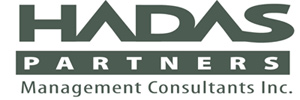One of my very good friends, who is also one of the most competent project managers I have ever worked with, recently asked me this question: “Is there a change management approach you can use to keep distracted senior management focused?”
Her point was that today everybody’s attention spans are short. We expect things to happen immediately. We are distracted easily when they don’t. It’s like our whole society is living with collective ADHD.
The same behaviour is present in senior management ranks too. This can become a problem when you are trying to manage a long and complex project and your sponsors are with you one day and focused on other priorities the next. How do you keep them on point for the duration of 12 to 24 months it can take to fully implement a strategic project?
There is a way.
 I struggled when I learned this approach initially early on in my career. And recently I re-learned, painfully, why it’s important to stick with it. Between these bookends of hurt I had good successes keeping executives and senior leaders focused on our projects.
I struggled when I learned this approach initially early on in my career. And recently I re-learned, painfully, why it’s important to stick with it. Between these bookends of hurt I had good successes keeping executives and senior leaders focused on our projects.
The first time I learned this lesson was on a project to update processes for a large retail client. This client was facing new aggressive competitors in the market it dominated, and everyone in the organization was anxious. The company culture was already action-oriented, but now the worry about the new competition drove them into overdrive. They went from “Ready-Fire-Aim” to “Fire-Ready-Aim”.
Being new, I tried to impress by being even quicker and ultra-responsive. Luckily I had a managing partner who kept me restrained. He forced me to slow my client team down long enough to think things through properly. This led to better decisions and eventually a very successful project. Good thing I wasn’t left to my own devices!
On my last project I forgot that initial lesson. To be perfectly honest, experience became my enemy. My client brought in change management 3 months after the project started and things were already not going well. There were a lot of fires to fight, and again, everyone was jumpy: “Fire-Ready-Aim”.
So, I convinced myself that I could take shortcuts and get around to getting to the same point later. Big mistake. But, on the positive side, it was a big gulp of necessary humble pie medicine!
Summary of the 5 Steps
However, in-between these two episodes of “valuable lessons learned”, to use a common consultese phrase, I used a very effective approach and kept key decision makers on track for the duration of many long and complex projects.
Here are the steps, and you can use them too. They are very straight forward (although require some work) and you should see your ability to keep your sponsor focused shoot up!
-
Emphasize the breadth of the impact to the organization
-
Get all of your sponsors to agree to the solutions to mitigate the impacts
-
Give your sponsors accountability roles for completing some of the solutions
-
Keep them constantly updated on achievements, risks and issues
-
Keep track of progress and create a bit of friendly peer rivalry
Step One: Breadth of Impact
What you may notice at the start of a project is that a senior manager understands the impact to their department well. However, their understanding of impacts to other areas of the organization, not under their control, tends to be spotty. They either do not have enough insight into these areas of the organization (understandable), or have not really thought about it in depth (realistic for busy executives).
So the first step is to document who will be impacted across an organization, how big the impact will be, and how important these impacted individuals or groups are. That last point is especially important to highlight.
Executives reach their positions in part because they can navigate organizational power structures. Once a senior level sponsor understands the impact on the various players, they can extrapolate the political ramifications if mitigation steps are not taken. And they can then estimate the related impacts to their own workload and relationships.
Once senior managers understand the organizational impacts, they will be open to hear your suggestions and recommendations. And encouragingly, they will want to participate in crafting the solution. They become invested because something personal is at stake.
It is here that your work stops being “organizational change management”, something theoretical, academic, or vague. And it is here that it becomes a tangible, concrete necessity. It becomes just as real as process maps, workflow documents and data migration.
The tool to use for this is the Stakeholder Analysis. Here is a link to a blog that gets into this in more detail.
Step Two: Sponsor Alignment on Solution
This next step sounds simple: recommending solutions to mitigate the many impacts identified. But that is not the real challenge here.
Anybody with a few years of more complex project experience, plus with some understanding of organizational change management, can come up with several realistic ways to mitigate change impact risks. Of course, the more experience the higher the quality of suggestions, and the more focused the recommendations, but that is still not the most important part.
Because senior managers are vested in some recommendations more than others, the real challenge is to get them all to agree to the same order of priorities. That’s not easy and will take some time. However, this is the most important step in this whole series. If you short cut this step everything afterwards can unravel.
This step is so important because here your senior management team becomes committed to each other, publicly, for the successful implementation of the solutions. Should one of your sponsors decide to back out because they lose focus or interest, they have to justify this to their peers. That’s a lot harder to do than telling you to stop doing something. Especially if that particular solution is high on one of the other executives’ priority list!
For example, one of your senior managers may get focused on another tangent, and no longer believe that one or more of the solutions is important. You can cure them from this type of distraction anytime by simply saying, “OK, I’ll let the others know (e.g., at the next steering committee meeting) that you decided to eliminate these activities because they’re not important.” Then watch what happens.
If you want to read more about the how-to of this step, here is a link to a blog on that subject.
Step Three: Sponsor Accountability for Results
 In this step you cement the mutual agreement to solutions. Here you need to first break down the work into the standard actions and tasks, durations, due dates, and names of those responsible for completing the tasks.
In this step you cement the mutual agreement to solutions. Here you need to first break down the work into the standard actions and tasks, durations, due dates, and names of those responsible for completing the tasks.
At this point you need to add the name of each sponsor as the accountable individual against a particular solution or series of activities. You can do that either in a separate document, or add their name in the “Responsible” column in a Gantt chart beside a rolled up activity. Now each sponsor can delegate the actual completion of the tasks while still remaining on the hook for the quality and timely completion of the solution.
This requires additional discussion and negotiation with the sponsors, but is easier to do after the previous step. Once each senior manager accepts their accountabilities you have to once again reaffirm this publicly in a group setting. That way the senior managers, in essence, become accountable to each other. This is really useful in order to complete Step 5 below.
Step Four: Regular Updates
To keep someone focused requires constant ‘re-focusing’ activities. Project Managers use the regular status updates for this very reason, and this tool is crucial here. However, relying on formal status update meetings is often not enough.
Because senior managers are decision makers, some of them may decide that they do not need to attend these meetings! This happens on long projects, where a manager gets distracted and starts skipping meetings. This behaviour could signal disinterest or loss of focus. The danger here is that you can lose the support of a key sponsor.
So it becomes important to rely on informal updates as well, whether it’s dropping into an executive’s office briefly when they’re not in a meeting, calling them directly, or texting/messaging them randomly. These are not time-wasting social calls but brief exchanges of pertinent information.
However, because they are one-on-one and ad hoc, there is an element of friendly, personal interactions that are an element of social calls. This usually creates a more open, relaxed environment. As a result you can have a broader exchange of information and a deepening of the relationship between the executive and the project. In a way it signals, “Whether you feel like it or not, you are part of this project.”
Step Five: Friendly Peer Rivalry
 The key word here is “friendly”. This step should definitely NOT be overdone, and if you are uncomfortable you can actually omit this one. But, used effectively, it can really boost the senior management support you get for your project.
The key word here is “friendly”. This step should definitely NOT be overdone, and if you are uncomfortable you can actually omit this one. But, used effectively, it can really boost the senior management support you get for your project.
The way to do this is to focus on achievements (rather than just outstanding items, risks and issues). This tends to run against the grain of how most PM’s have been trained to run projects. It means adding an element of celebration to status updates.
These are mini-celebrations, so no champagne and fireworks required. Every project has several key milestones, for example. This just requires the PM to take a couple of minutes during a status meeting now and then to acknowledge that something important has been achieved.
In order to create the friendly peer rivalry, create additional milestones based on solutions for which the senior managers are accountable (Step Three above). As you acknowledge the successful completion of the activity, give a shout out to the relevant sponsor, and only to them. Done in a spirit of genuine gratitude and fun, that will create friendly tension. The other sponsors will want that kind of recognition too, as all of us do as well. It’s human nature!
So the main tactics are recognition of achievements and selective gratitude. But again, it’s important not to overdo this for a couple of reasons.
Easy Does It
For one, this group of individuals is competitive by nature (that’s why they made it up so high in the company in the first place). So, not a lot of prompting needed!
And two, they are politically astute, even if they may not be overtly political themselves. That means they are sensitive to manipulation. If they begin to feel they are being covertly manipulated they will turn on you and you will become as popular as last week’s fish special.
How can you tell if you are doing this step well, as a project manager? Easy! Rather than always hounding executives to get decisions made or get materials approved, they start pressuring you to give them what they need for their decisions and approvals. That in itself can become a problem, but it’s a far better problem to have!
Final Piece of Advice
These steps may sound simple and straightforward (and in a way they are) but you need to be clear on how much effort they take. To do this right takes a lot of behind-the-scenes work to gather information, make calls, set up meetings, and follow up on activities. You have to roll up your sleeves to create templates and deliverables, and work to build good relationships.
However, like anything else in life, success is sweet and worth the effort in the end. We often remember the results better than the struggle. This is no different.
Good luck in your efforts here, and let me know how this worked out for you!













